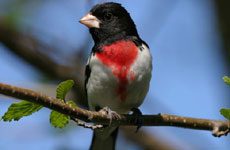 The West Cook Chapter of Wild Ones' January program will feature Steven Packard, Director of the Chicago Audubon Society, for a presentation on "How to Attract Birds to Your Yard." The meeting will be held January 19th, 2:30-4:30pm, at The Priory, Room 259, Dominican University, 7200 W. Division (corner of Division and Harlem) in River Forest. Program flyer.
The West Cook Chapter of Wild Ones' January program will feature Steven Packard, Director of the Chicago Audubon Society, for a presentation on "How to Attract Birds to Your Yard." The meeting will be held January 19th, 2:30-4:30pm, at The Priory, Room 259, Dominican University, 7200 W. Division (corner of Division and Harlem) in River Forest. Program flyer.
Community Profile: Kids Give Thanks for Nature
“If we want children to flourish, to become truly empowered, then let us allow them to love the earth before we ask them to save it,” writes David Sobel in Beyond Ecophobia The natural world inspires such joy in children. Whether they are counting stars in the sky or inspecting a fuzzy brown caterpillar, we see the wonder in their eyes and hear the glee in their voices. With Thanksgiving approaching, Green Community Connections asked children in our community what they are thankful for in nature.
Here's what they said:
Even the best scientists couldn't do what nature can do. Nature's shells are created very specifically. I like seashells because of their patterns and structure. They are pieces of glory.—Jana, 6th grade
I love when the leaves change colors. —Alex, 4th grade
What makes me happy is the moon in the sky, especially when it is really full and bright.— Sam, 9th grade
I am thankful for the giant honey crisp apples we buy from the supermarket —they're so yummy and crunchy. —Daniel , 4th grade
Winter is coming, and you can make snowballs and snow-mans! —Claudia, pre-K
When I'm not feeling well, I go outside and breathe the fresh air. It makes me feel a lot better. —Izzy, 6th grade
You can build fairy houses. I love them. —Elise, 4th grade
My brother caught a caterpillar that was light green with black stripes. It was fat and short. I thought it was interesting because we normally don't see that many caterpillars in the backyard like that. —Cecilia, 7th grade
I was doing a handstand, and I fell over and looked up and stared at the night sky filled with stars. I realized I'll never see that exact night sky again. Life goes on, and I'm thankful for every day we have. —Ella, 6th grade
Our neighbor gave me a big zucchini she grew from her garden. My mom made a salad out of it. But I didn't eat it. I don't like zucchini. —Zephy, 4th grade
What makes me the happiest is that I can play when I'm outside. I am thankful for the trees that I can climb and the air that I breath to make me stay alive.—Simon, 5th grade
I love the misty rain. It smells good. —Ivy, 4th grade
Trees and flowers make our surroundings look better. — Jack, 6th grade
I love animals, like my cat. She makes me laugh because, before she pounces, she wiggles her body. —Maddy, 6th grade
What I think is cool is I saw this plant that, when you touch it, it curls up. —Maeve, 4th grade
Nature makes the seasons change. But I don't like winter...well, I do, but it's cold! — Emily, 4th grade
Our children will inherit this beautiful planet, as well as some frightening problems.
“If we want children to flourish, to become truly empowered, then let us allow them to love the earth before we ask them to save it," writes David Sobel in Beyond Ecophobia.
So if we are concerned about our children's future, let's encourage their love for the animals and plants, as well as the air, soil and water around them.
At dinner or bedtime tonight, have a conversation about why your family is grateful for our beautiful planet. What was their favorite natural discovery recently? What foods, animals, plants or trees do they love best? How does nature make their heart sing? We invite you to post your comments on our facebook page or you can email them to: sally@greencommunityconnections.org.
Submitted by Laurie Casey
Leave the Leaves this Fall
By Stephanie Walquist -Originally published on Oakpark.com, reprinted with author's permission.Stephanie Walquist is a member of the board for The West Cook County Chapter of Wild Ones.
 According to the Oak Park Public Works Department, the village annually collects an average 2,850 tons of leaves at a cost of about $193,000. That's a lot of leaves and money (not to mention a lot of leafblowers). Then we individually spend more money and consume more fuel purchasing and transporting fertilizer and mulch, not to mention the production and packaging of the fertilizer and mulch.There is a more sustainable and ecologically-minded solution.
According to the Oak Park Public Works Department, the village annually collects an average 2,850 tons of leaves at a cost of about $193,000. That's a lot of leaves and money (not to mention a lot of leafblowers). Then we individually spend more money and consume more fuel purchasing and transporting fertilizer and mulch, not to mention the production and packaging of the fertilizer and mulch.There is a more sustainable and ecologically-minded solution.
Healthier soil results in healthier plants, more able to fend off various stresses. If we stockpile the leaves, then we also have free mulch next year to continue to improve the soil, increase water retention, and regulate soil temperatures. Leaf mulch in the garden or around shrubs and trees acts like a sponge, so during times of high rainfalls, the leaf layer absorbs the rain and allows the rainwater to percolate more slowly through the soil instead of into the sewer system.
Another little-known benefit to retaining leaves is that most of our butterflies, native bees, and other insects overwinter in the leaf litter or garden debris. Most butterflies and moths (including those beautiful Luna, Cecropia, and Polyphemous moths) spend their time as caterpillars or as pupae during the winter. Allowing the leaves to remain in the garden or in a pile will likely help to increase our native insect population, many of which are important as pollinators.
 Additionally, birds that migrate or are permanent residents also appreciate an increase in insect populations. Birds turn over the leaf layer, searching for food and enjoy the increased insect population in the spring as the overwintering insects complete their life cycles — 95% of birds feed insects to their young, and with the increased pressure on birds and nearly all species of animals, we should strive as a community to compensate for their habitat loss. We need to recognize that an increase in biodiversity is good for sustainability, an initiative that many Oak Parkers support.
Additionally, birds that migrate or are permanent residents also appreciate an increase in insect populations. Birds turn over the leaf layer, searching for food and enjoy the increased insect population in the spring as the overwintering insects complete their life cycles — 95% of birds feed insects to their young, and with the increased pressure on birds and nearly all species of animals, we should strive as a community to compensate for their habitat loss. We need to recognize that an increase in biodiversity is good for sustainability, an initiative that many Oak Parkers support.
The amount of leaves dropped can be overwhelming, and we do have small yards, but it is possible to keep the leaves. Last year my family was able to retain most of the leaves from our 80-plus-year-old Norway Maple, as well as all of the other garden debris in our very small yard. We simply put the leaves under bushes (away from the trunks), in an area for passive composting, and on the garden beds.
In the spring, the piles had reduced dramatically from a height of 18 inches to an inch or two. By July, I was wishing I had more leaf mulch and collected leaves from parkway trees that were dropping leaves to cover the bare soil in my gardens. All of the soil beneath the leaf mulch is loose and rich thanks to the sizable earthworm population, as well as the rest of the under-appreciated millions of decomposing organisms.
Another strategy for dealing with the volume of leaf litter (but one that would defeat the purpose of allowing next year's butterflies and moths to complete their life cycles in the spring) is to simply mow over the leaves and leave the leaf mulch on your lawn. It's a simple and inexpensive way to build a healthier lawn.
Keeping the leaves in the yard is a fairly simple and easy thing to do to benefit ourselves and our pocketbooks (no need to pay for fertilizer or for mulch). It reduces the burden on the village with associated decreases in pollution and oil consumption. Creatures benefit too: butterflies, bees, and other beneficial insects (yes, insect pests could survive too but in a healthy ecosystem beneficials keep them in check). It's a sustainable thing to do, resulting in increased beauty and a healthier ecosystem we all share.
For those interested in soil organisms, visit this Soil Biology Primer: http://soils.usda.gov/sqi/concepts/soil_biology/soil_food_web.html
Why Native Wildflowers? – An Introduction
West Cook Wild Ones Presents "Why Native Wildflowers? – An Introduction" by Tim Lewis, Wild Ones National President,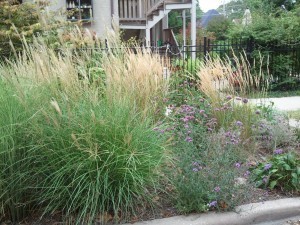 Sunday, November 10, 2:30-4:30 in Room 259, Priory Campus of Dominican University, 7200 W. Division Street, River Forest, Dominican's Priory Campus is just west of Harlem on Division Street in River Forest. Park in back and enter on the east side of the building.
Sunday, November 10, 2:30-4:30 in Room 259, Priory Campus of Dominican University, 7200 W. Division Street, River Forest, Dominican's Priory Campus is just west of Harlem on Division Street in River Forest. Park in back and enter on the east side of the building.
Why Natives is an introduction to landscaping using native plants. The presentation explains the history of our ecosystems, how we got to where we are today and why native plants are vital to the environment. The benefits and fallacies of natural landscaping will be explained. Finally, examples of native plant landscapes will inspire you to change your thinking about your own landscapes.
Tim Lewis is the national president of Wild Ones Natural Landscapers. He has been on the board of directors for over 10 years. Tim was president of the Rock River Valley chapter in Rockford for several years and served on the board for many more years. He is the past president of Four Rivers Environmental Coalition. Tim was named “Conservationist of the Year” for 2009 by the Sinnissippi Audubon Society. In 2011, he was a finalist for the Seth B. Atwood Memorial Park and Conservation Service Award and in 2012 was the recipient of this award.
He has been growing native plants in his yard since 1991. His yard contains over 100 species of native plants in prairie plots, rain gardens, and savanna and shade gardens.
Dominican's Priory Campus is just west of Harlem on Division Street in River Forest. Park in back and enter on the east side of the building.
Urban Prairie Gardening with Cheney Mansion's Charlie Reudebusch
Deb Quantock McCarey went to the 2013 Green Living & Learning Tour stop sponsored by West Cook County Chapter of Wild Ones at Cheney Mansion and talked extensively with Head Gardener Charlie Reudebusch. Deb was one of over 30 people who visited the Cheney Mansion stop and/or went on the bike tour of native gardens afterward. Those who attended came away inspired by Charlie's wide-ranging knowledge of the joys and benefits of native plants and his dedication to tending this beautiful landmark. Deb was also able to walk away with "a few new ideas...and a few free seeds they said I could scatter in my evolving 'little patch of Illinois prairie' now for next year."
Read more about Deb's Big Backyard.
October Wild Ones Chapter Meeting
Wild Ones is pleased to announce that Dr. Neafsey from Save the Praire Society in Westchester, IL will present to us at our next meeting on October 13, 2013 at 2:30 pm in Room 259 in the Priory on Dominican University’s campus (7900 W Division St, River Forest, IL). There will be signs to direct us to correct building. Dr. Neafsey will speak about the history of Wolf Road Prairie, its restoration, and its plant and wildlife communities. We are sure to be inspired to “bring nature home” after hearing about this important preserve.
If you were not able to make our meeting at the Green Community Connection’s event and would like to participate in a seed swap, please feel free to bring some seeds for exchange (bring pens and suitable material to hold seeds). For more information contact Pam Todd at 708-420-0170 or e-mail: pamtodd5@me.com.

Neighbors Share their Experience during the Green Living & Learning Tour
Video by Cassandra West of Seeding Chicago/New Media Access to capture the spirit of the day. Thank you, Cassandra!
The weather conspired to make Saturday, September 28th, a great day for the 2013 Green Living & Learning Tour. The tour hosted nearly 400 participants in the 17 tours and demonstrations highlighting innovative examples of sustainable living in Oak Park & River Forest. The Green Living & Learning Tour was organized by a great team of Green Community Connections' talented, passionate volunteers, and was made possible through the generosity of the site hosts and guides who shared their homes and their experience with their neighbors.
The Green Living & Learning Tour offered participants opportunities to see first hand homes that are using renewable energy -- solar and geothermal, & energy efficiency strategies -- a white roof, tankless hot water heater, and multiple design features that make a home more energy efficient. Water conservation and management was also a highlight including sites that capture 100% of the rain that falls on the property for use on gardens and lawns. Use of native landscaping drew significant interest -- both for its beauty and for the benefit of providing water conservation and habitat for bees, butterflies and birds.
Partnerships were key to the success of this year's tour. The newly organized "Wild Ones!" chapter organized the tour of native plants at Cheney Mansion and the Native Landscape Mini Tour. Seventy-five people gathered for the closing to enjoy a Harvest Picnic at Field Park co-hosted by the Sugar Beet Co-op. Sugar Beet did a tremendous job of pulling together a delicious spread of fresh food -- largely from local gardens and farmers.
Special thanks also goes to the tour sponsors. New sponsors including Cindy Gajewski with Beyond Properties, First United Church of OP and CYLA Design Associates, joined repeat sponsors including Seven Generations Ahead, the Village of Oak Park, the Village of River Forest, the River Forest Park District, Green Home Experts, and WebTrax Studio.
Tour Native Gardens at Cheney Mansion and More with Wild Ones
as told to GCC by West Cook Chapter co-founder Ginger Vanderveer Let’s go a little wild on September 28th and visit the native side of Oak Park during the Green Living and Learning Tour 2013. This stop on the all-day tour serves as the West Cook Chapter Wild Ones September meeting; all are welcome to attend the event and/or to join the local chapter. Wild Ones promotes the use of native plants in landscaping in order to save eco-systems that nurture bees and butterflies – and vice versa.
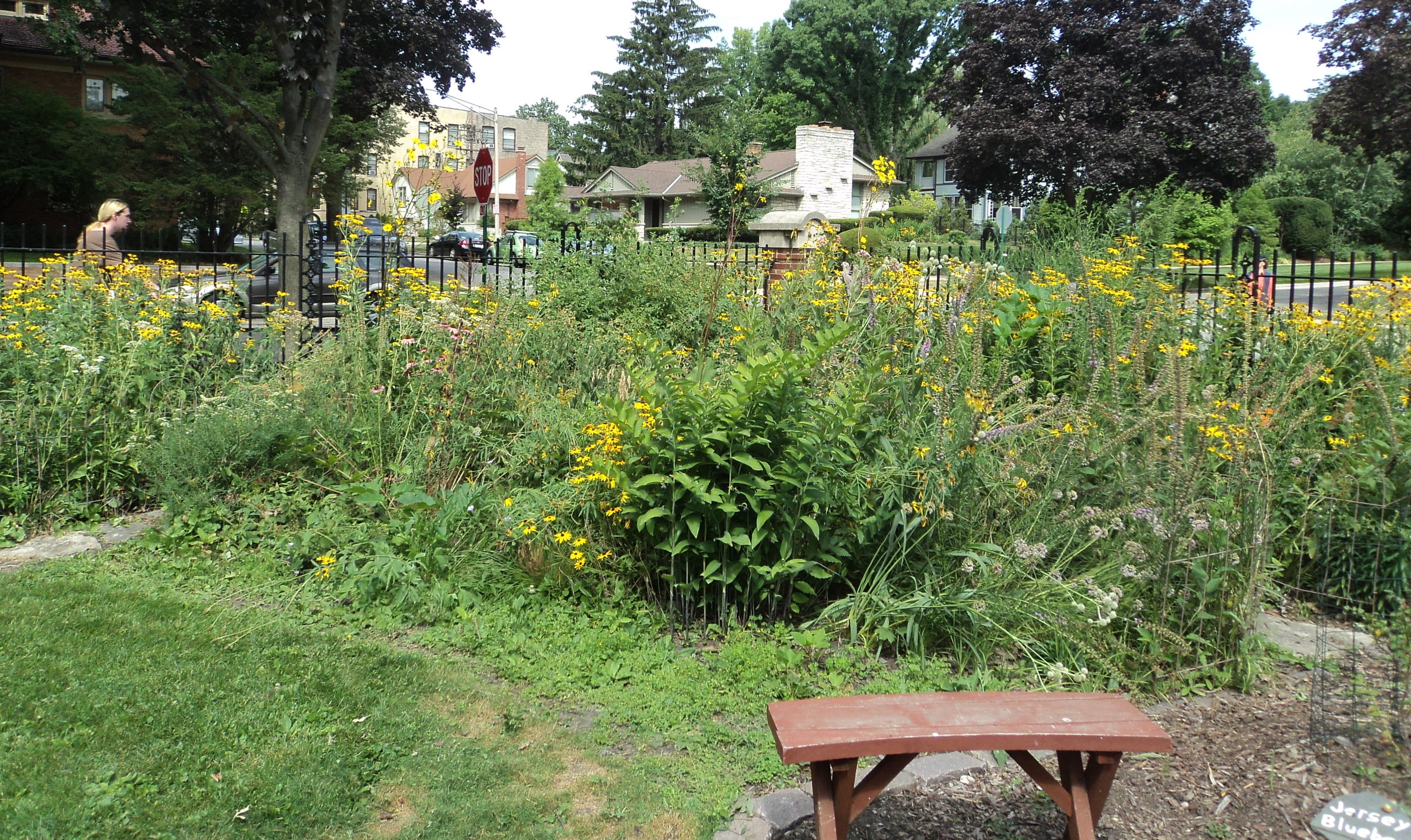 On September 28th, starting at noon, visit Cheney Mansion in Oak Park and explore the potager (kitchen garden) there. Our host, Charlie Ruedebusch, will lead a guided tour of the Cheney garden from 1 to 2 p.m, describing how the garden has evolved over the past ten years and sharing the joys and benefits (and pop a few myths) of choosing native plantings in the home landscape. Native plants attract beneficial insects to help pollinate the vegetable garden. Bring a few small paper bags and a pen – you’ll get to collect seeds of the native plants you most desire in your garden.
On September 28th, starting at noon, visit Cheney Mansion in Oak Park and explore the potager (kitchen garden) there. Our host, Charlie Ruedebusch, will lead a guided tour of the Cheney garden from 1 to 2 p.m, describing how the garden has evolved over the past ten years and sharing the joys and benefits (and pop a few myths) of choosing native plantings in the home landscape. Native plants attract beneficial insects to help pollinate the vegetable garden. Bring a few small paper bags and a pen – you’ll get to collect seeds of the native plants you most desire in your garden.
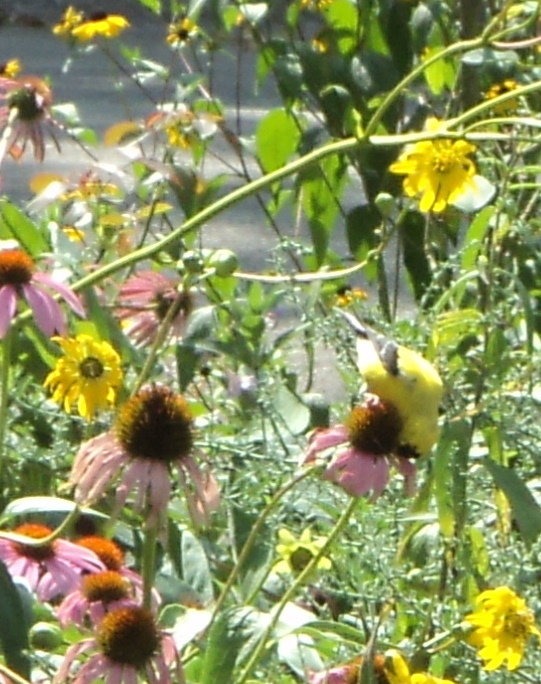 After Charlie’s tour, at 2:30 p.m. there will be an opportunity to join a group bicycle ride across Oak Park searching out food sources for bees, butterflies, and birds. We will visit gardens with native plantings that serve these creatures well. Bees and butterflies sniff out the fragrance from the nectar of native plants because it’s a fragrance they’ve smelled for thousands of years. Birds chomp greedily on the seeds of these same plants. On the bike trip we’ll admire the diversity of these hardy natives and how well they manage in our soil. Parks, schools and churches offer great opportunities to use green space to feed the creatures that work so hard pollinating the food humans eat. The bicycle tour will make stops at Scoville Park, Jackson Boulevard parkway, Good Shepherd Lutheran Church, Elmwood Street, Beye School and more.
After Charlie’s tour, at 2:30 p.m. there will be an opportunity to join a group bicycle ride across Oak Park searching out food sources for bees, butterflies, and birds. We will visit gardens with native plantings that serve these creatures well. Bees and butterflies sniff out the fragrance from the nectar of native plants because it’s a fragrance they’ve smelled for thousands of years. Birds chomp greedily on the seeds of these same plants. On the bike trip we’ll admire the diversity of these hardy natives and how well they manage in our soil. Parks, schools and churches offer great opportunities to use green space to feed the creatures that work so hard pollinating the food humans eat. The bicycle tour will make stops at Scoville Park, Jackson Boulevard parkway, Good Shepherd Lutheran Church, Elmwood Street, Beye School and more.
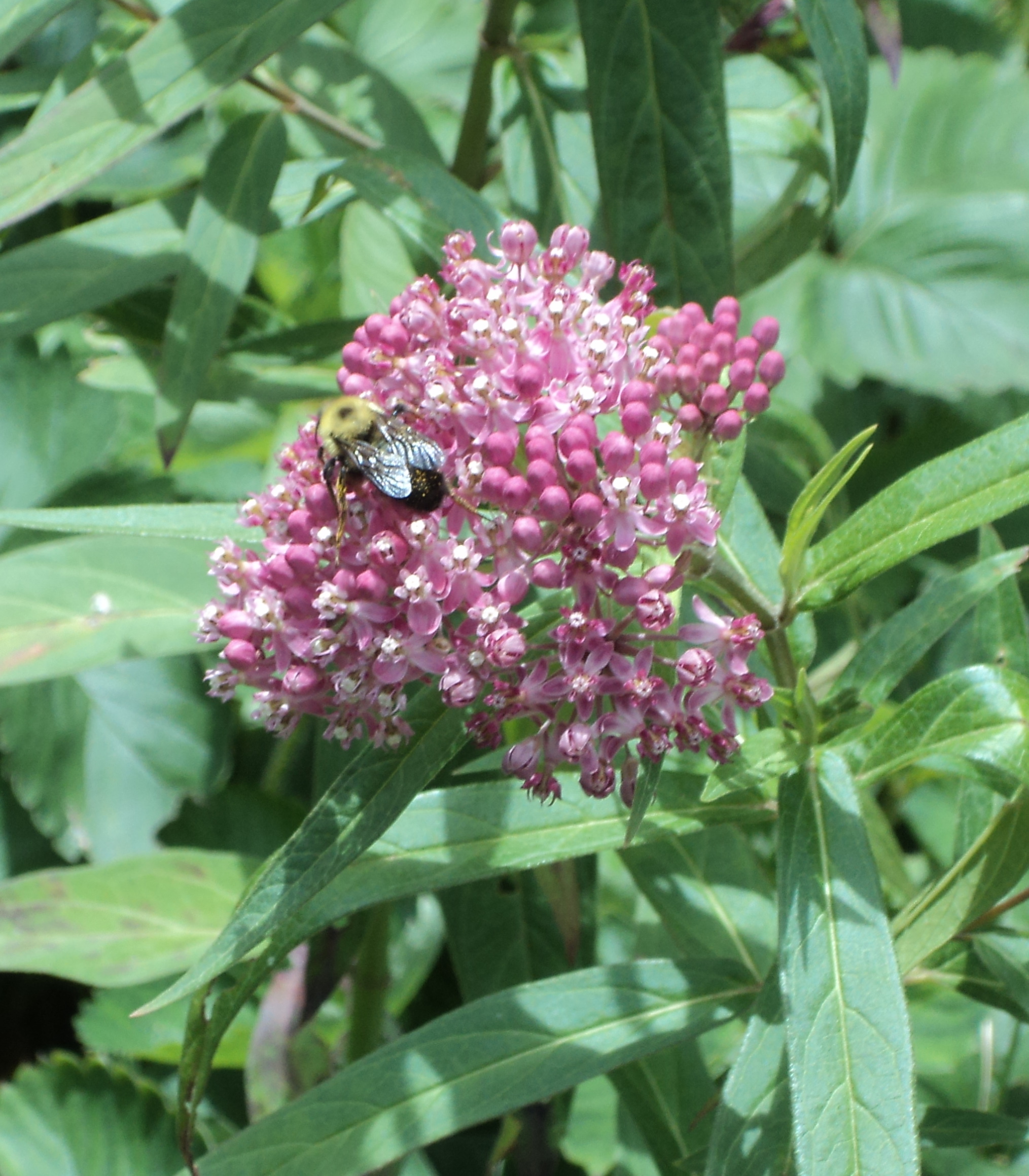
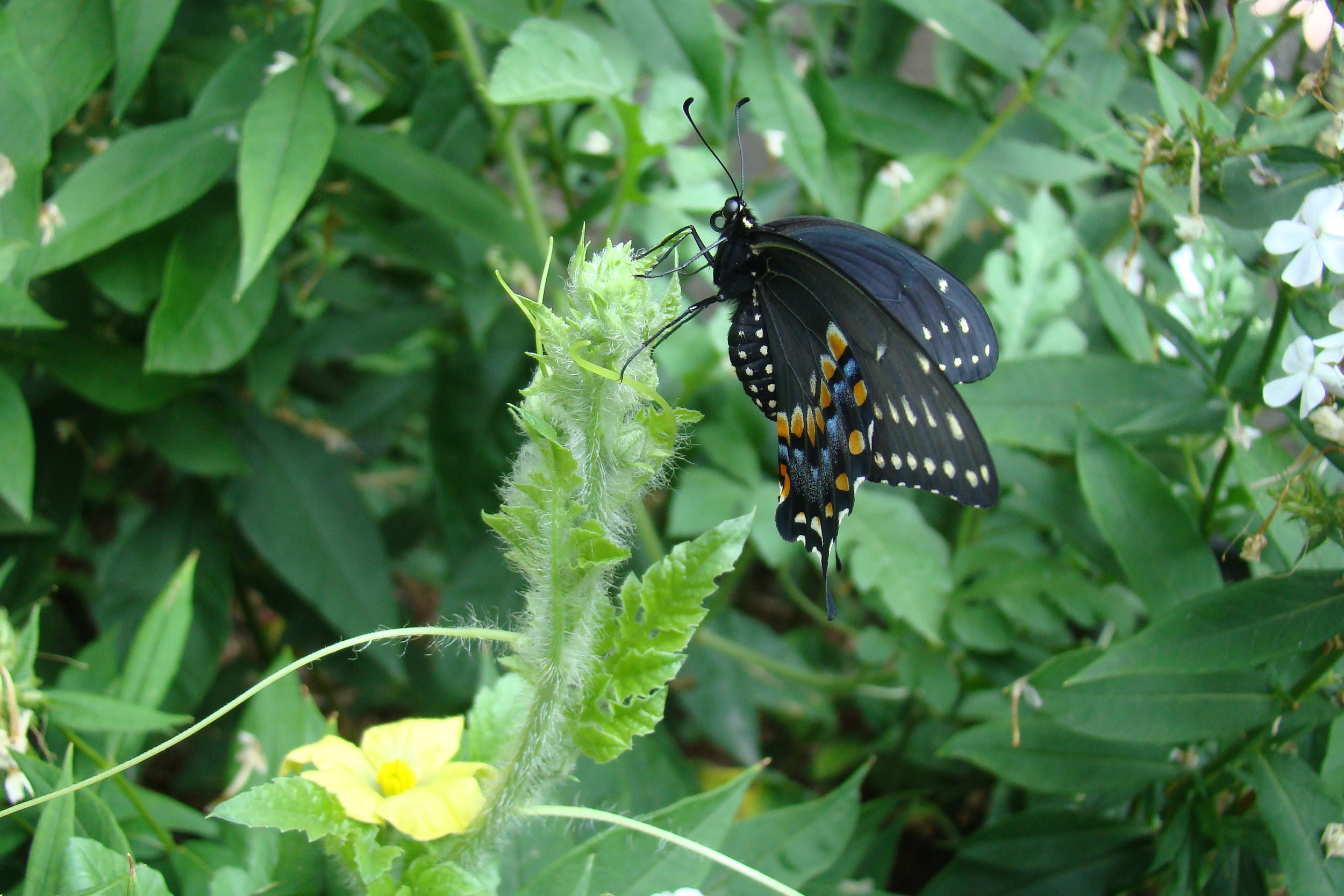 The 2013 Tour Map is available so that visitors who wish to see these gardens on their own may stop by these locations as well. From big to small, parkway to front yard, all native to mixed plantings - you’ll see a variety that will inspire you to add some natives to your garden. We also hope to have some sightings of butterflies, birds, and bees. Visiting these treasures at a leisurely pace will be our goal for the afternoon. Join us and feel the simple pleasure of going native.
The 2013 Tour Map is available so that visitors who wish to see these gardens on their own may stop by these locations as well. From big to small, parkway to front yard, all native to mixed plantings - you’ll see a variety that will inspire you to add some natives to your garden. We also hope to have some sightings of butterflies, birds, and bees. Visiting these treasures at a leisurely pace will be our goal for the afternoon. Join us and feel the simple pleasure of going native.
For more information about the event, including registration information for all 18 sites, visit the tour page at Green Community Connections.
Be Part of the West Cook Wildlife Corridor
Submitted by Pam Todd Our next Wild Ones meeting, Sunday, August 25 at 2:30 PM, at the Good Earth Greenhouse and Café (7900 W Madison, River Forest), will be the kick off for our Wildlife Corridor. We'll be featuring Ginger Vanderveer with a presentation on Monarch Watch and the beautiful, easy-to-grow plants you can add to your garden to provide habitat for this species - Illinois' state insect - which has suffered severe population decline.
To help you get started - or expand your collection - we'll have local ecotype milkweed plugs available at a reduced price. This is an ideal time to add plants to your garden and give them a leg up before next spring. Cost will be about $2-$3 per plug, depending on variety.
 It's (Almost) Official
Thanks to you, West Cook now has 18 Wild Ones Members. We're in the process of becoming chartered, choosing a permanent meeting place and time, and arranging some great events and speakers for the year ahead. Stay tuned for more information - and if you haven't already joined, visit www.wildones.org today.
It's (Almost) Official
Thanks to you, West Cook now has 18 Wild Ones Members. We're in the process of becoming chartered, choosing a permanent meeting place and time, and arranging some great events and speakers for the year ahead. Stay tuned for more information - and if you haven't already joined, visit www.wildones.org today.
Your Talents Are Needed There are so many things we can accomplish together, but we need your help! Please reply to this email and let us know if you'd be interested in becoming a West Cook WIld Ones board member or occasionally volunteering to help with programs, events, membership, etc.
Coming Soon: A Native Garden Tour Our September meeting will be the native garden event we're putting together for GCC's Green Living and Learning Tour on Saturday, September 28. Keep up to date on news of this event on the tour page.
First Meeting of West Cook Wild Ones
If you think a landscape should be about more than a lawn of non-native grasses, and want to learn more about native plants, attracting pollinators and birds, and the restoration of natural landscapes, you’re invited to attend the kickoff meeting to form a local chapter of Wild Ones, an organization devoted to creating natural gardens and landscapes using native plants. This first meeting will be held from 2:30-4:30 p.m., Sunday, July 21st, at Green Home Experts, 811 South Blvd., Oak Park, Illinois.
 Local Wild Ones member, Stephanie Walquist will give a butterfly presentation. She has been gardening for butterflies and rearing/releasing some species over the years. Stephanie has also been assisting in the installation of a native plant garden at Beye School with the hope of getting other schools and local residents to join in to create wildlife corridors. Plans will also be discussed for future educational programs, seed and plant swaps and field trips. Anyone interested in gardening and in preserving biodiversity through their landscaping is invited to join the chapter.
Local Wild Ones member, Stephanie Walquist will give a butterfly presentation. She has been gardening for butterflies and rearing/releasing some species over the years. Stephanie has also been assisting in the installation of a native plant garden at Beye School with the hope of getting other schools and local residents to join in to create wildlife corridors. Plans will also be discussed for future educational programs, seed and plant swaps and field trips. Anyone interested in gardening and in preserving biodiversity through their landscaping is invited to join the chapter.
Wild Ones members help and learn from each other – beginners and experienced members alike – about identifying native (and invasive) plants, creating natural landscapes, protecting biodiversity and our native pollinators, dealing with “weed ordinances,” and a lot more.
Members learn through monthly educational chapter meetings, field trips, and presentations by experts in the field of native plants and natural landscaping. Chapters are supported by a national organization; each member receives access to handbooks related to natural landscaping along with the regularly published newsletter, the Wild Ones Journal.
For more information – and to let us know you’ll attend – contact Pam Todd (pamtodd5@me.com), Ginger Vanderveer (gingervbrown@gmail.com) or Marni Curtis (sassyspider@gmail.com).
Wild Ones began in 1979, in Milwaukee, Wisconsin, and was granted non-profit tax- exempt certification in 1995. With 50 chapters, Wild Ones has approximately 3,500 members across the United States and Canada. See website at www.wildones.org.



